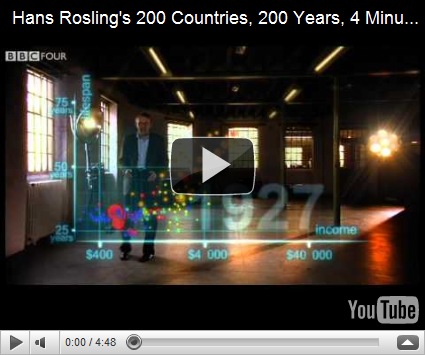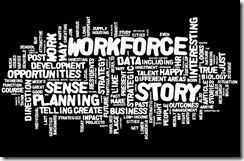Remember when Video calling was the stuff of science fiction? Now the technology's been around for years, but the vast majority of phonecalls are not video calls. On the other hand, SMS has had phenomenal growth - 8.6 trillion text messages are sent each year, according to Portio Research. Decades ago, if you had to predict:
On a global phone network where both high-definition video calls and short text messages are possible, which would be the dominant messaging system?
...you would likely think that video calls would be the dominant technology. Certainly British Telecom thought so, and gets bonus points for the Aussie Accent in this clip:
...but the future has a way of surprising us, and what existing trends tell us now can only tell us so much.
One of the problems with extrapolating existing trends is that it can miss major changes at the periphery of the prediction - your overall direction might be right, but the implementation won't be as you expect it. I love the prediction in this video from 1957 that by the year 2000, recipe books will be replaced by punch-cards - right direction, wrong time-frame, and understandably but amusingly misses predicting the extinction of punch-cards in the late 70's / early 80's.
It's instructive when thinking of the future to think about the extension of current trends and developments - but the world doesn't always work in a linear way.
To effectively use data to forecast the future, the forecast is only a starting point. Here's a process that works in Strategic Workforce Planning:
- Do a current state analysis - for a given topic, look at how things are today. For the workforce, this means profiling the demographics, skills, productivity, locations of your staff.
- Extrapolate existing trends - look at the changes that are already occurring, and extrapolate these into the future. This will identify unsustainable trends, and give you directional insight. In workforce planning, these changes will be occurring through your hiring and retention trends, and internal movements. This is what's sometimes referred to as the No Change Future State - if all existing trends continue, what will the future look like? At this point, you get the "punch card recipe book" view of the future workforce - directional, but likely very very inaccurate.
- Do an environment scan and look at those PEST factors (Political, Environmental, Socio-Economic, and Technology factors) that may have an impact on your forecast.
- Of the factors from point 3 above, identify the two factors that both a) have an uncertain outcome; and b) will have significant effects on the outcome. Note that this is not a risk matrix; risk matrices score factors on likelihood and impact - here you are scoring on uncertainty and impact. A factor that's uncertain and would have a high impact, for example, would be an election result where the two parties have significantly different policies that directly impact your business model.
- Create a grid of those two factors - and think about what would happen in the future (whatever your timeframe) in your area of interest in each of those scenarios.
- Find commonality in those four scenarios in terms of how the world would deal with each of those scenarios; and you may have some insights into future events in that space.
Chances are, you'll still be off the mark, but you'll have gone through a process of looking at some of the ways that you might be off the mark... and you will probably get some insights into just how varied the possible futures may be. This will allow you, when planning strategy, to think about some techniques and initiatives that may be applicable to all possible futures, and even uncover areas for improvement that can be made today. Ultimately, planning for the future is more about building in flexibility than it is about building in certainty.
Special Bonus Video - clothing in the year 2000, circa 1930. It's the sleeves what does it.
posted by Alex Hagan
Labels: Environment Scanning, Futuring, Scenarios, Strategic Workforce Planning, Workforce Planning Techniques








![overview_chart_05[1] overview_chart_05[1]](http://lh4.ggpht.com/_Ve33RiHjzOg/TGrU74Y2wiI/AAAAAAAACIo/nBiiEzzn31U/overview_chart_05%5B1%5D_thumb%5B1%5D.gif?imgmax=800)